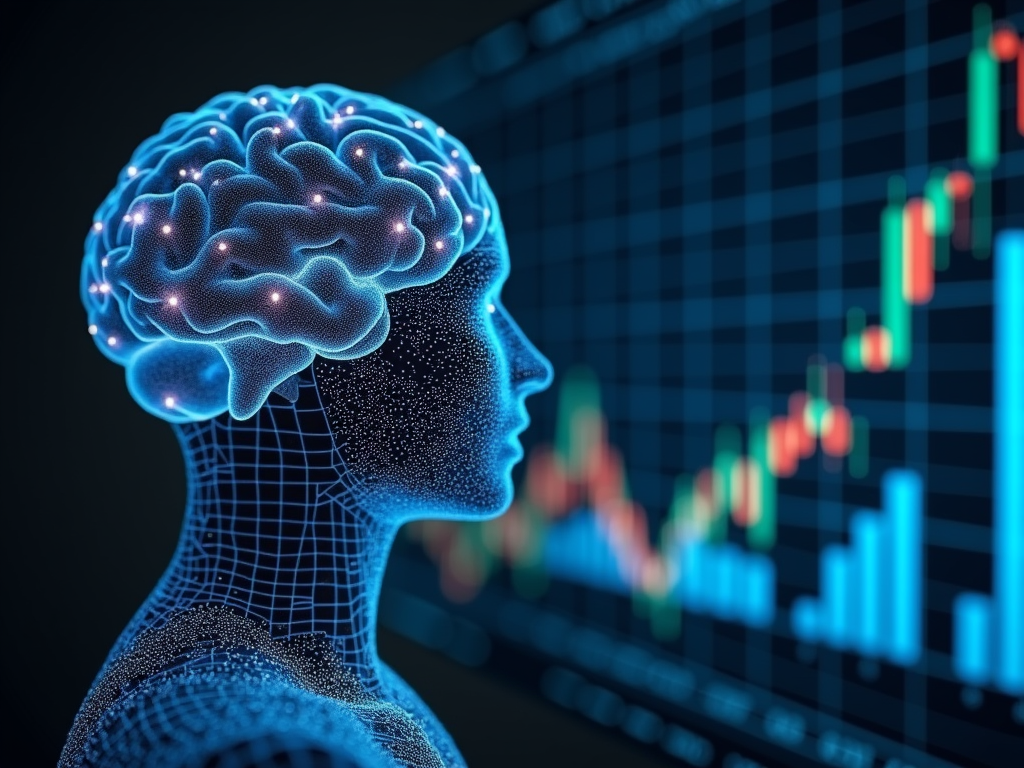Artificial Intelligence (AI) is changing the way traders approach financial markets. AI-powered trading strategies can analyze vast amounts of data, detect patterns, and make decisions faster than any human ever could.
If you’re looking to automate trading decisions, optimize market strategies, and enhance profitability, AI offers a massive edge. Algorithmic trading techniques, powered by machine learning, deep learning, and predictive analytics, help traders make data-driven choices in real time.
In this guide, we’ll break down how to build high-performing trading strategies with AI, covering everything from data collection to model training, risk management, and deployment.
AI in Trading: Key Concepts and Techniques
AI’s Role in Financial Markets
Financial markets move fast, and AI is helping traders keep up. Machine learning for trading strategy development enables automated decision-making by learning from historical data. AI can process millions of market signals daily, ensuring traders react to opportunities with precision.
There are three primary AI techniques used in trading:
- Machine Learning (ML): Detects patterns in historical price movements.
- Deep Learning: Uses neural networks to analyze complex relationships in market data.
- Reinforcement Learning for Trading: Optimizes strategies through trial and error, improving over time.

Types of AI-Powered Trading Strategies
AI trading isn’t just about automation—it’s about optimization. Here’s how different AI-driven quantitative trading models work:
- Algorithmic Trading vs. AI-Driven Trading: Traditional algo trading follows pre-set rules, while AI refines strategies based on live market conditions.
- Quantitative Trading Models: Use statistical data to make evidence-based trades.
- Predictive Analytics in Trading: Uses AI to forecast price trends and identify profitable opportunities.
Components of an AI Trading Strategy
Gathering and Processing Financial Market Data
AI models need high-quality data to make accurate predictions. Traders must gather:
- Historical Market Data: Price action, volume, and order book history.
- Real-Time Market Data: Live price feeds and news sentiment.
- Alternative Data Sources: Social media trends, economic reports, and earnings calls.
Data preprocessing techniques—such as normalization, outlier removal, and feature selection—help clean and refine raw market data before feeding it into AI models.
Feature Engineering for AI Trading Models
Once data is collected, traders must extract relevant trading signals:
- Market Indicators: Moving averages, RSI, MACD.
- Market Sentiment Analysis with AI: Text-based analysis of news and social media.
- Neural Networks in Trading: AI models that process complex relationships between indicators.
Building an AI-Powered Trading Algorithm
Choosing the Right Machine Learning Models
Different strategies require different AI models. Here’s how to choose:
- Supervised vs. Unsupervised Learning: Supervised learning is used for trend forecasting, while unsupervised learning finds hidden patterns.
- Deep Learning for Financial Market Predictions: Used for high-frequency and complex trading signals.
- Reinforcement Learning for Trading: Helps AI “learn” the best trading decisions through continuous feedback.
Developing and Training AI Trading Models
Building an AI-powered trading algorithm involves several steps:
- Data Collection & Preprocessing – Cleaning and organizing financial data.
- Feature Engineering – Identifying key trading signals.
- Model Selection & Training – Backtesting AI-powered trading strategies to ensure accuracy.
- Model Validation – Avoiding overfitting in trading models for real-world performance.
Optimizing and Deploying AI Trading Strategies
Risk Management in AI Trading
Even the best AI-based algorithmic trading strategies must have risk controls:
- AI Risk Management in Trading: AI-driven stop-loss and position sizing.
- Drawdown Controls: Preventing massive portfolio losses.
- AI-Powered Risk Assessment: Detecting anomalies and market crashes.
Enhancing Trading Performance with AI
To improve results, traders should:
- Optimize Trading Signals with AI for better execution.
- Fine-Tune High-Frequency Trading Algorithms for efficient order placement.
- Use Real-Time Adaptive Learning to adjust trade strategies dynamically.
Best Tools and Platforms for AI-Based Trading
Top AI Tools for Trading Strategies
Some of the best AI tools for trading strategies include:
| Tool | Type | Features |
|---|---|---|
| Trade Ideas | AI-Powered Platform | Real-time stock scanning, AI-driven trade recommendations |
| QuantConnect | Open-Source | Algorithmic backtesting, live trading, cloud-based execution |
| Alpaca | API Trading | Commission-free trading, AI-integration support |
Integrating AI Trading Systems with Broker APIs
To automate trading, connect AI-based trade execution strategies to a broker’s API. Ensure:
- API Security & Compliance – Follow market regulations.
- Automated Trade Execution – AI sends orders directly to exchanges.
- Real-Time Risk Monitoring – AI adjusts positions based on market conditions.
Key Takeaways and Next Steps
AI is revolutionizing trading. By following the steps outlined—from data collection and feature engineering to risk management and algorithm deployment—you can build a high-performing AI trading strategy.
Start small, refine as you go, and leverage AI tools to maximize profitability. Want to dive deeper? Explore quantitative finance AI applications and advanced trading strategies for sustained success.